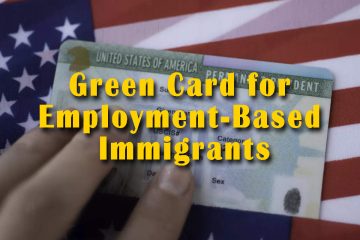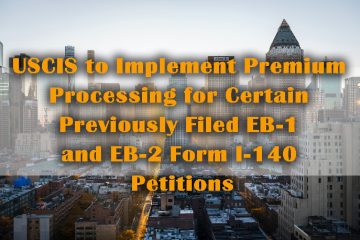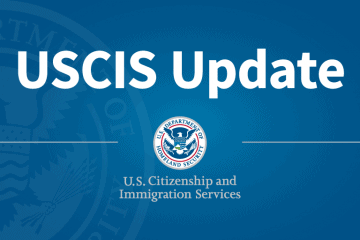At a glance
- The regulation will expand premium processing service to additional case types, including additional categories of I-140 petitions, certain Form I-765 employment authorization document (EAD) applications, and some Form I-539 applications to change or extend status.
- The rule will take effect 60 days after publication in the Federal Register, but implementation will occur in phases over a period of at least three years and dependent on DHS’s capacity.
- The phased implementation is expected to begin this fiscal year with EB-1 Multinational Manager and EB-2 National Interest Waiver (NIW) I-140 petitions, Form I-539 applications to change to F, J, or M status, and Form I-765 applications for F-1 Optional Practical Training (OPT) and J exchange visitor employment authorization.
- In FY 2025, premium processing is expected to become available for Form I-539 applications for extensions and changes of status for dependents of H, L, E, O, P, and R principal nonimmigrants, and for Form I-765 applications for an as yet unspecified additional group of EAD application types.
- The rule also announces a new method for determining when the premium processing clock starts for new case types, based on when USCIS receives “all prerequisites for adjudication,” which could lengthen the actual wait time for action on a case.
The issue
On March 30, the Department of Homeland Security (DHS) will publish a long-awaited final regulation that sets the groundwork for expansion of U.S. Citizenship and Immigration Services’ (USCIS) premium processing program to several additional immigration benefit case types, but defers the start of implementation until later this fiscal year.
USCIS announced the new rule as part of its actions to reduce backlogs and to provide certain relief to work permit holders. The rule is intended to implement legislation that was signed into law in October 2020 as part of the Emergency Stopgap USCIS Stabilization Act, and largely mirrors the premium processing case types, fees, and adjudication timeframes detailed in that legislation. In February 2021, USCIS expanded premium service to E-3 petitions pursuant to the legislation but until now, the agency had not initiated expansion to any other case types.
Lengthy phase-in for expanded premium processing
The final rule takes effect 60 days after publication in the Federal Register, but the actual implementation of expanded premium processing will be phased in over a period of at least three years and is likely to impose conditions or limitations on the availability of premium service.
By September 30, 2022, the end of this fiscal year, USCIS plans to expand premium processing eligibility to Form I-140 immigrant worker petitions in the EB-1 Multinational Manager and EB-2 National Interest Waiver (NIW) categories, Form I-539 applications to change to F, J, or M nonimmigrant status, and Form I-765 applications for F-1 OPT and J exchange visitor employment authorization. USCIS will announce on its website the premium processing availability details and any conditions that may apply.
The expanded list of eligible case types, revised fee schedule, and processing timeframes set forth in the final rule are as follows.
| Case Type | Processing Timeframe* | Premium Processing Fee** | Expected Implementation Timeline |
| Most Form I-140 EB-1, EB-2, and EB-3 petitions | 15 calendar days (current) | $2,500 | Current |
| Form I-140 EB-1 Multinational Manager & Form I-140 EB-2 National Interest Waiver (NIW) | 45 calendar days | $2,500 | FY 2022 |
| Form I-129 Nonimmigrant Worker Petitions except H-2B and R | 15 calendar days (current) | $2,500 | Current |
| Form I-129 Nonimmigrant Worker Petitions for H-2B and R | 15 calendar days (current) | $1,500 | Current |
| Form I-539 Change of Status to F, J, or M | 30 calendar days | $1,750 | FY 2022 |
| Form I-539 Change or Extension of Status for E, H, L, O, P, and R Dependents | 30 calendar days | $1,750 | FY 2025 |
| Form I-765 Application for Employment Authorization for F-1 OPT and J exchange visitor EADs | 30 calendar days | $1,500 | FY 2022 |
| Form I-765 Application for Employment Authorization for not yet specified additional group of EAD applicants | 30 calendar days | $1,500 | FY 2025 |
* The “processing timeframe” refers to the deadline by which USCIS must issue either an approval notice, a Request for Evidence (RFE), a Notice of Intent to Deny (NOID), or a denial notice.
** Consistent with the provisions of the enabling legislation, the Final Rule also permits USCIS to adjust the premium processing fees on a biannual basis, based on changes in the Consumer Price Index for All Urban Consumers (CPI-U).
USCIS is expected to make an announcement on its website as each new case type becomes eligible for premium processing. The website announcement may also place conditions on the availability of premium processing for new case types. Such conditions may include limiting the availability of premium processing to cases that have been pending for a minimum period of time, or delaying the start of the premium processing clock for administrative reasons, such as the running of a required selection lottery.
In addition, for new case types becoming eligible for premium processing, the processing clock will only begin to run upon the date USCIS receives “all prerequisites for adjudication”– meaning that the agency would begin to count the processing timeframe only after it receives all necessary documentation, information from interviews, biometrics, or background checks, as appropriate for the case type. Depending on the case type and its requirements, this means that petitioners and applicants could wait longer than the official premium processing timeframes to see action on their cases.
Related USCIS initiatives
In a related development, in an effort to reduce backlogs and lengthy processing times, USCIS also announced a forthcoming temporary final regulation that is expected to temporarily expand the automatic extension of Form I-765 employment authorization for certain renewal applicants. It is not yet clear whether the final regulation would lengthen the automatic extension period, expand the categories of EADs eligible for the automatic extension, or both.
What this means for employers and foreign nationals
Until the final rule takes effect and USCIS announces the premium processing availability details for the newly eligible cases, premium processing will only be available for the currently eligible I-129 and I-140 petition case types.
However, employers and foreign nationals should be aware that USCIS does not intend to include all EAD applications in the premium processing program. The final rule suggests that a substantial percentage of EAD application case types may ultimately not benefit from premium expansion. This fiscal year, only F-1 OPT and J exchange visitor EAD applications are expected to become eligible for premium processing, categories which DHS indicates represent only about 10% of EAD application filings. Expansion to other EAD categories is not expected until FY 2025, and although the rule does not identify which other EAD categories may become eligible in that year, data provided in the final rule suggest that the FY 2025 expansion may cover only an additional 5% or so of overall EAD filings.


